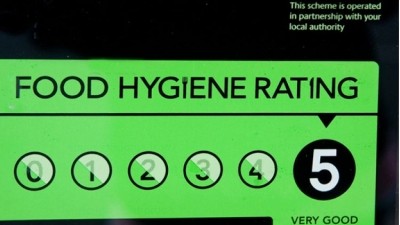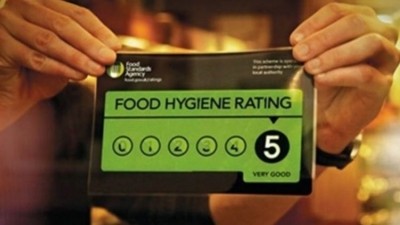Fit for the bin: mouldy food will force a kitchen to close

It is no surprise three quarters of consumers state they would never visit a pub that had been implicated in a food poisoning incident, which means getting it wrong once could damage your reputation for a very long time.
According to the Food Standards Agency (FSA), the number of catering businesses that received a five-star food hygiene rating in the 12 months to 18 July 2016 was 26,198. This year that figure rose to 28,038, with the number of food businesses scoring a zero hygiene rating drop-ping from 108 to 84.
This turnaround of fortunes is despite local government cost-cutting, which has heavily impacted the budgets councils have to work with when it comes to deploying hygiene inspectors into foodservice businesses.
Advice and help
Facts from food safety management system company Checkit:
60%
of consumers would not return to a venue if the site was dirty or if it had a low food hygiene rating
75%
would never visit a site that had been implicated in a food poisoning incident
£1.5m
is what a pub received in fines and a prison sentence after it served unsafe food
244,000
cases of food poisoning relate to chicken
48,000
cases of food poisoning relate to vegetables, fruit, nuts and seeds
43,000
cases of food poisoning relate to beef and lamb
Switching to a digital food safety management system such as Checkit, rather than a paper-based hygiene record, helps optimise compliance and remove the risk of missed checks and incomplete records, according to Checkit managing director David Davies
Figures from the 2014 Food Standards Agency Food and You Survey, including 3,453 interviews with UK adults
Local councils are the bodies that visit pubs and make the decision on the rating awarded to food outlets. Chartered Institute of Environmental Health head of policy Tony Lewis advises operators on how to get the most from local authorities to gain advice and help.
He says: “The majority of food safety mistakes happen because pubs and restaurants are unaware of the help and support that is available to them.
“Environmental health teams in local authorities across the country are on hand to provide free guidance and I would strongly suggest that any licensee who is unsure what steps to take or how to meet regulations gets in touch with these teams.
“Additionally, it is essential that premises are kept clean and free from pests, and that establishments are not overly ambitious in what foods they are preparing and serving.
“Finally, it is imperative that all management and staff are properly trained in food safety and understand their individual and collective responsibilities.”
However, when it comes to avoiding the issues in the first place, there are key controls pubs need to have in place to help prevent food-safety incidents.
Outbreaks of illness
Food safety equipment that will make a difference
Thermometers
Ensuring the core temperature of the meat being served is correct can keep food poisoning at bay, and watching the temperature of the fridge/freezer can also make sure products are safe to use.
Colour-coded equipment
Avoid cross-contamination by using colour-coded boards, knives, mats and even thermometers.
Stock control
As mentioned by Food Safety Guru, using labels on food to clarify their use-by date can help keep ingredients safe.
Pest control
Keep pests out of the kitchen by investing in quality door and window screens, secure bins and fly killers.
Posters
A good hygiene system includes posters and ticklists to ensure the team stays compliant with regulations and act as safety prompts.
British Hospitality Association food safety advisor Dr Lisa Ackerley says: “Where businesses have not managed to control cross-contamination, outbreaks of illness such as campylobacter can occur.
“Outbreaks of campylobacter food poisoning are usually caused by either cross-contamination issues with raw chicken, contaminated equipment or surfaces, bacteria getting on to ready-to-eat food, or where dishes are made from undercooked chicken products, particularly chicken livers.
“Key controls include cooking chicken liver to a core temperature of 75°C, and ensuring disinfectants and sanitisers are available, as well as a method of application that will kill bacteria.
“Staff should be trained to at least a level two food hygiene standard and checked to see they understand issues around cross-contamination – washing hands thoroughly with soap and warm water, storing raw meat and poultry separately from ready-to-eat foods and using separate areas for preparing meats and ready-to-eat foods.”
According to Food Safety Guru, there are three main things that prevent pubs from achieving a level five food-hygiene rating. Out-of-date food stored in fridges and incorrect food storage is just one. However, to prevent this from happening, pubs can check fridges at the end of the day and dispose of any foods with a use-by date for that day. Coloured day dots are the easiest way to manage this.
Hazard analysis
Not having a complete hazard analysis and critical control point (HACCP) plan in place cannot just stop pubs from achieving a high hygiene rating, having one is also a legal requirement.
By recording fridge and freezer temperatures twice daily, at the beginning and end of the day, and recording core cooking and cooling temperatures is how to stay compliant.
A dirty, disorganised kitchen is another reason why a pub would not receive a five-star hygiene rating.
However, Food Safety Guru suggests that following a cleaning schedule and daily sign-off once work has been completed can banish this.
Using a kitchen sanitiser that conforms to the British standard BS EN 1276 (ideally with a contact time of 30 seconds to one minute) and putting into place a ‘clean as you go’ cleaning routine can also help keep a pub kitchen clean.
The food safety experts advise cleaning and sanitising work surfaces after each task, not forgetting fridge and door handles.
Using blue roll not cloths during prep and service, emptying kitchen bins regularly, keeping raw preparation separate from ready-to-eat and ensuring hands are washed regularly and after every change in task or activity are also tips from the expert.
Hygiene ratings
Number of establishments rated in year to 18/07/2016
5 26,198
4 12,740
3 6,284
2 1,372
1 1,130
0 108
Number of establishments rated in year to 18/07/2017
5 28,038
4 12,065
3 5,362
2 1,236
1 949
0 84







